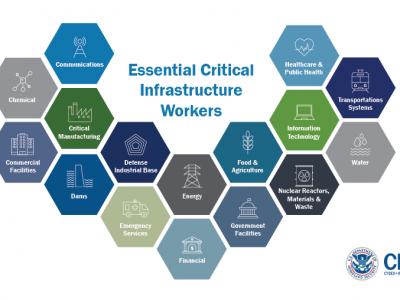Real-time detection, monitoring and analyzis of threats and hazards
The ability to detect, monitor and analyze Passive and active threats and hazards at scenes in real time
Potential Solutions
The focus of this
is the ongoing surveillance and monitoring of threats on an incident scene. Solutions developed to address this
will allow responders to continuously evaluate existing, emerging, and potential hazards. Areas that may
monitoring include a broad radius around an incident scene, areas where
and
actions are underway, or specific ingress/egress routes. Addressing this gap includes a modular solution comprised of fixed and/or mobile platforms that carry sensor packages; software systems that integrate data, assess threats, and provide decision support; and a graphical user interface to display threat and hazard information.
The nature and inherent danger of threats and hazards change over the course of an incident. This is exemplified by the cascading effects following landfall of Hurricane Katrina. Mass flooding and leakage from chemical facilities significantly changed the nature of the
operations. Awareness of the threats and hazards that already exist on the scene, as well as those that have the potential to affect health, safety, or operations is critical.
Active threats and hazards are defined in this document as objects or persons that exist on an incident scene that are currently or imminently dangerous to the life or health of responders, victims, or the public. Examples include: active shooters, the presence of flammable or explosive chemicals in proximity to fire or gunfire, significant structural instability of buildings or debris in proximity to response operations, booby-traps, etc. Identification, geolocation, and monitoring of these threats will allow responders and incident commanders to conduct operations more safely.
Passive threats and hazards are defined in this documents objects or persons that exist on an incident scene that are not currently or imminently dangerous to the life or health of responders, victims, or the public. Examples include: the presence of household or industrial chemicals on an incident scene, the forecast of inclement weather in proximity to response operations, etc. The presence of objects or persons that may be dangerous does not mean that the danger will manifest, but it is essential to responders to know that they exist. Passive threats may become active during the course of the incident.
This second gap is distinct from the third gap, “the ability to rapidly identify hazardous agents and contaminants, “which focuses on the rapid detection, identification, and characterization of specific chemical, biological, and radiological hazards. Solutions to address the gap described in this document may integrate some of the data from “the ability to rapidly identify hazardous agents and contaminants”. However, this gap is distinct as it addresses the continuous monitoring and analysis of a wider array of threats, along with the integration and visualization of threat data.
Rationale & related CM function(s)
- Detect pending emergencies and provide early warning
- Conduct biological and epidemiological monitoring and alert on pandemics
- Conduct monitoring and anticipation
- Conduct seismic monitoring and alert of geological hazards
- Conduct weather monitoring and alert on weather hazards
- Establish continuous monitoring
- Monitor media coverage
- Monitor the affected area
 |
Portfolio of Solutions web site has been initially developed in the scope of DRIVER+ project. Today, the service is managed by AIT Austrian Institute of Technology GmbH., for the benefit of the European Management. PoS is endorsed and supported by the Disaster Competence Network Austria (DCNA) as well as by the STAMINA and TeamAware H2020 projects. |

